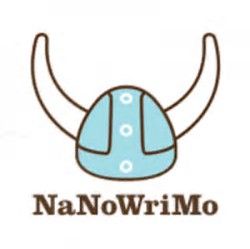Reading time: Just over 4 minutes
A whispered word, NaNoWriMo stirs equal measures of fear and interest in many writers. Why? And is the program a good idea?
Do you want to write a book quickly? Say, in 100 days?
Nothing strikes me as a crazier idea, although I’ve recently seen a number of posts promoting the concept.
And, of course, we’re fast coming up on the start of NaNoWriMo, an annual event encouraging people to write a 50,000-word novel in just 30 days.

In 2017, more than 306,000 writers participated in the silly, life-changing, improbable (choose whichever adjective you like) event, which sees participants producing a 50,000-word novel in a single month. In case you’re incredibly bad at arithmetic, I can tell you that the job requires writing 1,667 words each day.
Some moderately celebrated authors even developed their books following this program, including Sara Gruen (Water for Elephants), Erin Morgenstern (The Night Circus), and Rainbow Rowell (Fangirl ).
Now, let me move on to the second question, have I ever done it? No! I’m not a fiction writer. And I always have too much going on in my life in November to be able to write 1,667 words a day. But that doesn’t mean you shouldn’t do it if the idea appeals to you.
Here are some points you should consider before giving this dance partner a whirl:
PRO: This program will surely help you develop the writing habit. Many people I work with have somewhere between 10,000 and 30,000 words towards some inchoate idea of a book. Typically, they work on it for three to five hours at a time and then put it away for a couple of weeks or months. But here’s the problem: writing a novel is a marathon, not a sprint. If you aspire to write a book (and, by the way, publishers regard a typical length more like 80,000 words), you need to develop the habit of writing daily.
CON: This program may cause you to burn out. When I work with writers, I always require them to take off two days each week. The purpose? To give them a chance for rest and recovery. Just as muscle-building requires a break between sessions of exercise, so does writing. We do our best work when we have a system that will allow us to continue for the amount of time (measured in months or years — not days) it’s going to take to complete the job. Many NaNoWriMo manuscripts end up abandoned in bottom drawers because the writer is too sick of their text by the time November 30th rolls around.
PRO: This program will teach you to turn off your internal editor, also known as the Doubt Monster. Many writers cripple themselves with doubts about their writing. Was that last sentence good enough? Did they use the right word? Is anyone else going to read what they are working so hard to write? If you think too hard about any of these questions, you will never be able to squeeze out the next word, never mind the 50,000 words required for NaNoWriMo or the 80,000 words needed for most publishers. The relentlessness of the do-it-all-in-a-month deadline, however, will force you to put those considerations aside and focus only on your word-count. For many writers, this is precisely the medicine they need.
CON: If you don’t do adequate thinking and planning beforehand, the manuscript you have may be utterly unworkable. NaNoWriMo does not permit you to begin with a novel that’s already underway. That said, organizers do encourage you to make a plan. I doubt, however, that the majority of people do anywhere near an adequate amount of planning which should include figuring out the broad outlines of your plot and having a detailed backstory for each of your main characters.
PRO: If you succeed, this program will give you a manuscript that you can edit. The hard work of writing is not so much the writing — it’s the editing. If you can force yourself to squeeze out a rough draft in the 30 days of November, then you’ll have a body of work you can turn into much better shape with judicious editing in December and beyond.
CON: NaNoWriMo is wrong when they call you a “novelist” for writing a first draft. Instead, you are someone with a first draft. With this, you are in an excellent starting point for a writer, but not remotely near a finishing one.
Here’s what I recommend:
If the idea of NaNoWriMo excites and inspires you, then go for it! Register here.
But if it sounds too daunting and terrifying, plan your own NaNoWriMo using more realistic terms. In fact, I consider my Get It Done program a reasonable-person’s NaNoWriMo. Here’s how it works:
- Identify the five days a week you are going to write or edit. (If possible, make them five consecutive days, like Tuesday to Saturday or Monday to Friday.)
- Commit to a reasonable word count goal (perhaps 250 words) or editing time (30 minutes) you will do each of those five days.
- Ensure the goal is easy enough so that you will be able to accomplish it, come hell or high water, every day.
- But, before you start writing, spend sufficient time planning. It’s okay to be a “pantser” (someone who develops plot points on the fly, without an outline) but at the very least have a detailed biography of each primary character.
- Break the habit of editing while you write so that you can produce your words relatively quickly each day.
- When you have to take a break, for holidays, illness or other reasons, reduce your goal when you resume writing/editing, so you have the chance to regain your conditioning.
- Have an accountability partner to whom you report your daily achievements. This person should not give you a pass if you fail to deliver what you’ve promised. At the very least, you need to feel mightily embarrassed if you don’t meet your goal.
- If you’d like me to be your accountability partner, the deadline for applying to Get It Done on Nov. 1 is this coming Friday, Oct. 25/19. Find the registration form by going here and scrolling to the very end of the page. Select the bright green “click here to apply now” button.
Many of us like to imagine that the hardest part of writing a book is, well, the writing. In fact, the way, way, way harder job is the thinking and planning beforehand. And the editing, after.
This is an updated version of a post that first appeared on my blog on Oct. 17, 2017.
*
My video podcast last week aimed to help people separate their professional and personal writing. Or, see the transcript, and consider subscribing to my YouTube channel. If you have a question about writing you’d like me to address, be sure to send it to me by email, Twitter or Skype and I’ll try to answer it in the podcast.
*
Have you ever considered (or completed) NaNoWriMo? Why or why not? We can all learn from each other so, please, share your thoughts with my readers and me in the “comments” section below. Anyone who comments on today’s post (or any others) by Oct. 31/19, will be put in a draw for a copy of my first book, 8 1/2 Steps to Writing Faster, Better. Please, scroll down to the comments, directly underneath the “related posts” links, below. Note that you don’t have to join the commenting software to post. See here to learn how to post as a guest.

